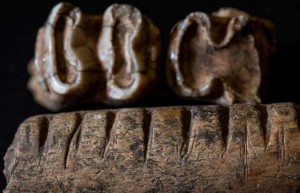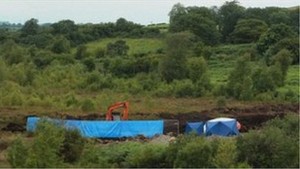The excavation and analysis of human remains has long been a staple in archaeology. Archaeologists can learn a lot about a civilization from the remains that they have left and how they take care of their remains. You can tell a lot about the values of a civilization based on their burial rituals and treatment of their own remains. And through the use of forensic archaeology, human remains can be used to give insight into more recent events. With forensic archaeology, more recent remains can be used as evidence in criminal cases. Although the use of excavated remains is a fundamental part of archaeology, and has provided a great deal of information to archaeologist it does not come without controversy. Many people object to the excavation of remains because it does not show respect to the person who died.

Remains of Army Discovered in bog. Gave Archaeologists Information about Teutonic Massacre. Use of Human Remains
Forensic Archaeology is a subset of archaeology that uses artifacts in order to help solve criminal cases. In forensic archaeology, human remains are very important. Archaeologists utilize human remains to determine information about a deceased person from before the person dies. This information age, sex, time of death, method of death, etc. can be crucial to a criminal case. In many cases criminals would have gotten away without being caught without the use of forensic anthropology. But does the good that comes from the use of human remains outweigh the negatives? Some say no.
Since the first excavations of human remains have been conducted there has been controversy. In many cultures, people are taught to show respect to the dead. It is disrespectful to disturb the remains of an already buried person. This can be trouble for archaeologists who need to use human remains to gather information about things. There have been many instances of clashes between archaeologists and people who believe that the use of human remains is wrong. This has occurred many times pertaining to the excavation of ruins belonging to indigenous peoples. Many descendants of Native American tribes are against the excavation of burial sites. A recent example of archaeologists clashing with people who oppose the use of human remains occurred in Britain. People have called for the reburial of the body of a young girl whose body had been excavated 80 years ago to pay respect to the girl. Archaeologists argue that the body is needed to conduct research.
In the end there are both positives and negatives to excavating human remains. The information obtained from human remains gives us great insight into events in both the past and the present, but it is also very controversial. I believe that if the correct respect is given when excavating the remains, that the use of human remains is fine and is an integral part to archaeological discoveries.
Sources:
http://www.bajr.org/BAJRGuides/14.%20Field%20Guide%20to%20the%20Excavation%20of%20Human%20Inhumated%20Remains/FieldGuidetotheExcavationofHumanInhumatedRemains.pdf
http://www.gazetteandherald.co.uk/search/4083964.Decision_to_come_on_girl___s_skeleton/
Further Reading:
http://alunsalt.com/2009/02/01/the-ethics-of-studying-human-remains/
http://www.bbc.com/news/uk-northern-ireland-11426538









